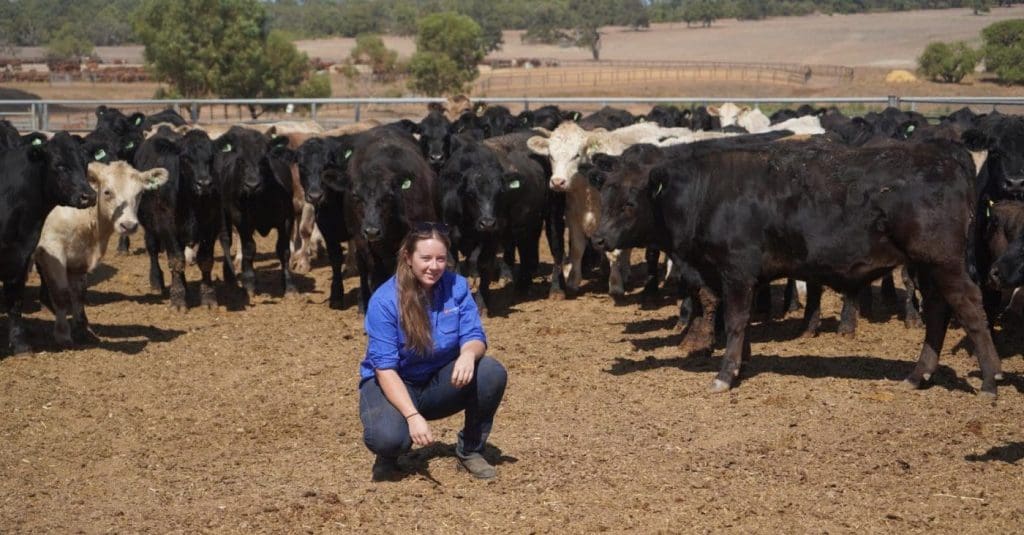
A YOUNG Western Australian feedlot feed manager says the west is watching the east closely, while working through some of its own unique challenges, as the local grainfed scales up.
Keeley Williams is the feed manager at the 9000 head capacity Cullalla Feedlot near Moondah, and was the inaugural winner of the Western Australian Lot Feeders’ Association ambassador award. Cullalla feeds local NFAS slaughter cattle and live export cattle.
The award sent her on a trip to some east coast feedlots with well-known nutritionist Rob Lawrence from Integrated Animal Production and to last year’s ALFA Smart Beef conference at Elders’ Killara Feedlot.
She recently presented some of the observations from her trip to the WALFA board.
“The trip was specifically tailored to what I wanted to learn about and that was shade and shed designs,” Ms Williams said.
The trip included visits to Canning Downs, Wonga Plains, Bonbine and Whyalla feedlots as well as the University of New England’s research feedlot Tullimba.
“The operations on the east coast are so much bigger than what we have in WA. The feedlot I work at is 10,000 head and there’s not many bigger than that in the west,” she said.
“Seeing 22,000 and 55,000 head feedlots were pretty impressive and to see the infrastructure they needed to put emphasis on was a big thing. Over here, because we are smaller we can get away with the ‘if it ain’t broke don’t fix it’ mentality.”
Eyes on the east coast
Ms Keeley said while most of the cattle in WA were grown for live export, finishing cattle on grain was becoming a bigger part of the conversation.
“People are starting to see the benefits of lotfeeding a lot more, especially with all of the talk about the live export industry in the media,” she said.
The Federal Government’s proposed phase out of live sheep exports is also expected to have an impact on cattle industry – with a lot of live sheep boats also taking cattle.
“There is no doubt the WA industry is watching what the east coast is going. While we have more feedlots than people think, we are certainly not as developed as the east.”
WA faces unique challenges
While WA was watching the development of feedlots in the east, Ms Williams said the local industry faced its own unique challenges with scaling up.
“Our biggest issue is that we are so isolated over here and a lot of our land is used for cropping and sheep,” she said.
“The climate is also a lot different, we don’t have access to rations that are being fed out in the eastern states. They have cottonseed, citrus pulp, almond meal, liquid supplements and all those commodities.
“The rations I am running are dry-rolled barley and lupins, dry supplements and roughage in the form of hay and straw – there’s not a lot of silage kicking around. Pretty much all rations are dry, they are different to the eastern states and I think we have different markets as a result.”
